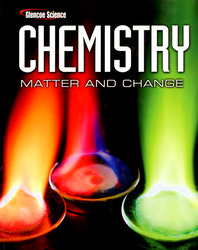1 <a onClick="window.open('/olcweb/cgi/pluginpop.cgi?it=jpg::::/sites/dl/free/007874637x/514694/fig3_4.jpg','popWin', 'width=NaN,height=NaN,resizable,scrollbars');" href="#"><img valign="absmiddle" height="16" width="16" border="0" src="/olcweb/styles/shared/linkicons/image.gif"> (24.0K)</a> A) helium B) hydrogen C) oxygen D) steam 2 A) a chemical property B) a physical property C) a gaseous property D) a crystalline property 3 <a onClick="window.open('/olcweb/cgi/pluginpop.cgi?it=jpg::::/sites/dl/free/007874637x/514694/fig3_7.jpg','popWin', 'width=NaN,height=NaN,resizable,scrollbars');" href="#"><img valign="absmiddle" height="16" width="16" border="0" src="/olcweb/styles/shared/linkicons/image.gif"> (62.0K)</a> A) chemical change B) phase change C) extensive property D) intensive property 4 2 (16 grams)A) 184 grams B) 200 grams C) 16 grams D) 216 grams 5 <a onClick="window.open('/olcweb/cgi/pluginpop.cgi?it=jpg::::/sites/dl/free/007874637x/514694/self_check_quiz_3_3.jpg','popWin', 'width=NaN,height=NaN,resizable,scrollbars');" href="#"><img valign="absmiddle" height="16" width="16" border="0" src="/olcweb/styles/shared/linkicons/image.gif"> (19.0K)</a> A) heterogeneous mixture B) solid C) solution D) Not enough information is given. 6 A) crystallization B) sublimation C) chromatography D) filtration 7 A) filtration B) alloy C) pure metal D) heterogeneous mixture 8 <a onClick="window.open('/olcweb/cgi/pluginpop.cgi?it=jpg::::/sites/dl/free/007874637x/514694/fig3_17.jpg','popWin', 'width=NaN,height=NaN,resizable,scrollbars');" href="#"><img valign="absmiddle" height="16" width="16" border="0" src="/olcweb/styles/shared/linkicons/image.gif"> (45.0K)</a> A) The hydrogen gas is twice as massive as the oxygen gas. B) The hydrogen gas is half as massive as the oxygen gas. C) More information is required. D) There is no relationship because gasses have no mass. 9 <a onClick="window.open('/olcweb/cgi/pluginpop.cgi?it=jpg::::/sites/dl/free/007874637x/514694/tab3_4.jpg','popWin', 'width=NaN,height=NaN,resizable,scrollbars');" href="#"><img valign="absmiddle" height="16" width="16" border="0" src="/olcweb/styles/shared/linkicons/image.gif"> (64.0K)</a> A) 42.20 grams B) 51.30 grams C) 6.50 grams D) 100.0 grams





